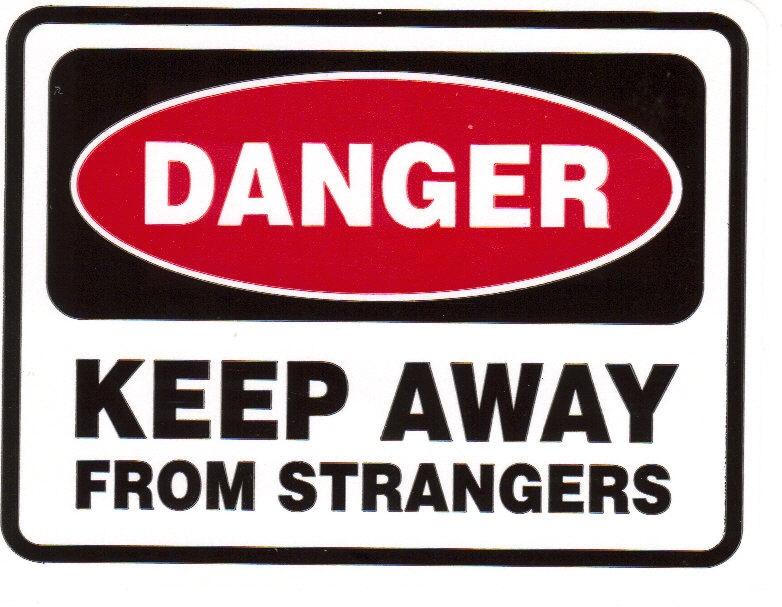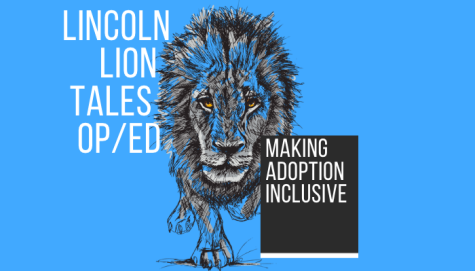Stranger Danger: Looks Can Be Deceiving
A guide in which I teach you a sure-fire method of accurately judging a stranger. (Spoiler Alert: That’s not possible, I’m lying.)
Editor’s Note: This editorial explores stereotypes in our community.
Do not talk to strangers. We’ve all had the rule drilled into our young, impressionable minds throughout childhood. Our parents were well-founded in teaching us this “golden rule” of sorts, with abductions and assaults being in the news all too often. According to a poll published by the General Social Survey, only one-third of Americans believe that “most people can be trusted.” The other two-thirds answered that they could never be too careful when dealing with strangers. This growing caution of American adults has likely been passed on to their children, the younger generation.
As we, the younger generation, grow older, the rule “Do not talk to strangers” grows fuzzier. Sure, it is common sense to avoid a stranger who appears “dangerous” or threatening. But how do we determine this, without having any prior knowledge about the person? By their clothing? Their behavior? How do we judge a stranger?
Nancy Casco, Class of ’16, said about talking to strangers, “It depends on the person. If there’s a man who looks homeless, it’s creepy. But if it’s a man who is like taking care of his children, you know he’s a chill person.” Makes sense, right? It is more familiar to talk to a parent figure, rather than a homeless person who seems so detached from our everyday lives.
But here’s a scenario. You see a homeless person waiting for the same bus you are. He appears grungy, wearing baggy clothing and an unkempt beard. He attempts to make casual conversation with you, but you shut him down, turn your back. It is a common perception that homeless people are not right in the brain. That they are lunatics, alcoholics, drug-users, who have let their lives deteriorate into a shopping cart and a cardboard box. So when you catch a whiff of those grungy clothes, that is all you see, when really, he is just a nice old man who is down on his luck.
What you don’t know is, that well-dressed, friendly looking woman walking by, who you pay no mind to, is actually a criminal who has been arrested for theft and aggravated assault. There is no true way of knowing where any attempt at conversation comes from. What is dangerous is not always obvious. Often, women, who society commonly perceives as kinder and less prone to criminal acts than men, can be just as vicious.
One day when I was in the seventh grade, I got dropped off for rehearsal for a play I was in at the time, but my mom dropped me off at the wrong location, a senior center, where rehearsals had been held up until that week. With no way of contacting my mom, I considered my options to borrow a phone. On one side of me, there was a grungy homeless man making camp in the courtyard. On the other, a couple of kind-looking senior citizens walking out of the building. Who did I choose to approach and talk to? You bet I chose the senior citizens. In that situation, I acted on ingrained stereotypes. And in that specific situation, I do not think that was necessarily a bad thing.
Another tricky area is society’s perception of those dressed in dark clothing, or like “gangsters.” Matthew Guarneros, Class of ‘16, said he would only talk to a stranger “if they don’t look suspicious. If they are wearing a black trench coat or have a black backpack, I wouldn’t talk to them.”
An anonymous student echoed this sentiment, saying, “I think people in black hoodies with sunken eyes are scary.”
Accurate or not, these perceptions are common. I find it humorous, and slightly frightening, that we live in a society where in order to determine if someone is “safe” or is a threat, we reduce these people to the quality and/or color of the pieces of fabric they choose to wrap around their bodies. Seems a bit arbitrary to me, though it’s true that certain types of clothing tend to have huge social implications. Think “hippies,” or “goths.”
Living in a modern world, “Do not talk to strangers” is not such a catch-all piece of advice. There can be benefits to freely giving the gift of conversation. For one, talking to people is a great way to make friends. And as another student commented, “If you’re lost, you could ask someone to borrow their phone. Or they could tell you which way to go.”
But it is still important to take caution when on the street or in public places. As Guarneros summed it up, “Teenagers should be more cautious, because more caution equals more safety, which equals less dead people.”
Judge your surroundings and other people carefully, perhaps weighing factors like age, gender, appearance, and perceived socioeconomic status into the mix (as it is commonly an unconscious action when we stereotype; we are trusting our instincts), and perhaps giving people the benefit of the doubt. Still, never take it for granted that a stranger, just because he or she looks friendly, does not also have a double life as an undercover criminal.
You never know.

Eli is a senior at Lincoln. He is from San Jose, CA, and has lived in the same house for 17 years. He enjoys playing basketball and frisbee, and spends...











